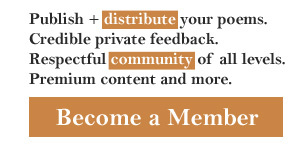This is an analysis of the poem The Canterbury Tales; Chaucer's Tale Of Sir Thopas that begins with:
Part 10
PROLOGUE TO CHAUCER'S TALE OF SIR THOPAS... full text
Elements of the verse: questions and answers
The information we provided is prepared by means of a special computer program. Use the criteria sheet to understand greatest poems or improve your poetry analysis essay.
- Rhyme scheme: X X a bcbddee XfdXfXX XXXbXXXX X X XXXcXX XdfdXf XXgXXg XXXbXb eaXXeX eXXXXX ddhdXh ccecXe iXXiiX dXXdde XXhXXh gfXfXj XdXkdX XglbllX XXXbXXhbbh XXhXcXfXXX ddXdXXXddX XcXXfX iXXiib ddXdXX XgXXXX XXXXXX XeXXXX Xlcaac hhXhhX XXcbXc XXXddXXccX c XdXkkX XXXXa
- Stanza lengths (in strings): 1,1,1,7,7,8,1,1,6,6,6,6,6,6,6,6,6,6,6,6,6,7,10,10,10,6,6,6,6,6,6,6,6,6,10,1,6,6,6,6,4,1,5,5,5,5,5,5,5,5,5,3,1,5,
- Closest metre: trochaic tetrameter
- Сlosest rhyme: no rhyme
- Сlosest stanza type: tercets
- Guessed form: unknown form
- Metre: 11 1001010110 100110001010 111101001001 1111101011 111110110 111111011 111111011 1101110111 110010111111 101111100 1111110111 1001011111 0001001110 1101011101 1101010100 110111110 1110110111 1101011110 101111110100 110110111 1001110110 1101111111 1111101010 11 110 1100101010 10100010 1111100 011010 10011111 01010100 011110 1011011 01011001 1100001 01010111 1111011 101101 11010101 11011100 110111 01011001 11110010 1101001 010011110 10010110 110100 01000101 0110100 111001 111111 11110110 011011 10110010 01011101 110111 11001101 1111100 110101 11111110 11100100 110011 11100101 1011111 110111 1101011 10010100 011101 01010110 10010011 11111 111101101 11011110 100101 11010111 01001100 1100110 11000101 1000111 110101 01010011 01010100 110101 01001111 01000101 111111 11010110 11110101 1101101 0110010 1111111 010011 11011101 1101011 111010 11111011 0101110 111010 11011000 1100111 01111 11010110 11111100 111011 11111110 10011100 100011 01 11010101 10111111 1111110 000101110 11010111 11111 111111011 1110011 0101 11 1011111 1011111 101111 1111011 0111100 0100101 1111100 10111011 101111 01 1001010 0111110 100010 01110111 1011101 111110 1111111 11100100 10011 11 1110011 00010101 1111010 11011011 011111 100111 11100110 11011101 110110 11010011 1010100 111111 11100101 1010111 0101001 0111001 0111111 110111 00101001 1100110 011111 11111100 11010101 100110 00101010 01101000 1101100 1111011 11100100 1110 11001111 11001110 011011 111011 0101111 011101 11011100 11011100 110001 11010110 11100101 110101 11010110 11100110 011101 01110111 1101011 01010 11111111 1111101 101100 11000100 01010100 010101 01010101 0101011 11011 01010110 11011111 011110 0111101 01110001 110011 01 11011001 01110100 010111 0101 1111110 111101 110011 010010100 1010110 101111 110001001 01010100 010111 01101100 1110110010 01100 0111110 11010111 111001 01011101 110100110 110111 11110110 1110011 110001 0111010 11110010 010111 11110001 11011100 110101 1101 1011010001010 1100110100 11111101 1100110100 110101111 1101001101 1101010110 0110110011 111111011 101110101 110001111 1111110101 1101001101 1111011001 1111111101 11111110101 110110101 01101111100 101111011 1111010101 111011101 11010100100 00010110 1001100101 0101111110 111111001000 1101010101 11111110101 1100110011 1110010110 1000110100 1101111111 110101010 110110111 1100110011 1010011110 0111111011 111111101 0100111110 10100010101 0010100110 111101101 1111101111 1011110110 111101100 101000101 100101111 1101011111 11110111110 0101 011110011101 10101010101010 010010010110101 01100111010010 01
- Amount of stanzas: 54
- Average number of symbols per stanza: 171
- Average number of words per stanza: 34
- Amount of lines: 290
- Average number of symbols per line: 31 (strings are less long than medium ones)
- Average number of words per line: 6
Mood of the speaker:
The punctuation marks are various. Neither mark predominates.
The author used lexical repetitions to emphasize a significant image; ', and, of, in, his, me, i, thou, nat are repeated.
The poet used anaphora at the beginnings of some neighboring lines. The same words and, the, of, his are repeated.
The author used the same words sir, or at the beginnings of some neighboring stanzas. The figure of speech is a kind of anaphora.
There is a poetic device epiphora at the end of some neighboring lines thopas, thee are repeated).
The poet repeated the same words thopas, ' at the end of some neighboring stanzas. The poetic device is a kind of epiphora.
If you write a school or university poetry essay, you should Include in your explanation of the poem:
- summary of The Canterbury Tales; Chaucer's Tale Of Sir Thopas;
- central theme;
- idea of the verse;
- history of its creation;
- critical appreciation.
Good luck in your poetry interpretation practice!
Pay attention: the program cannot take into account all the numerous nuances of poetic technique while analyzing. We make no warranties of any kind, express or implied, about the completeness, accuracy, reliability and suitability with respect to the information.

